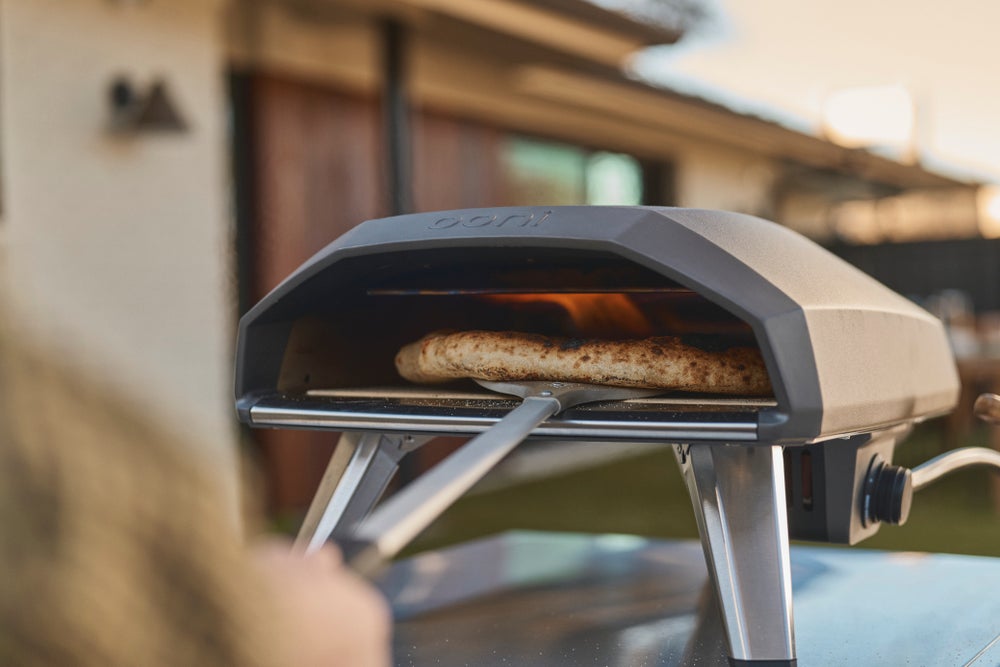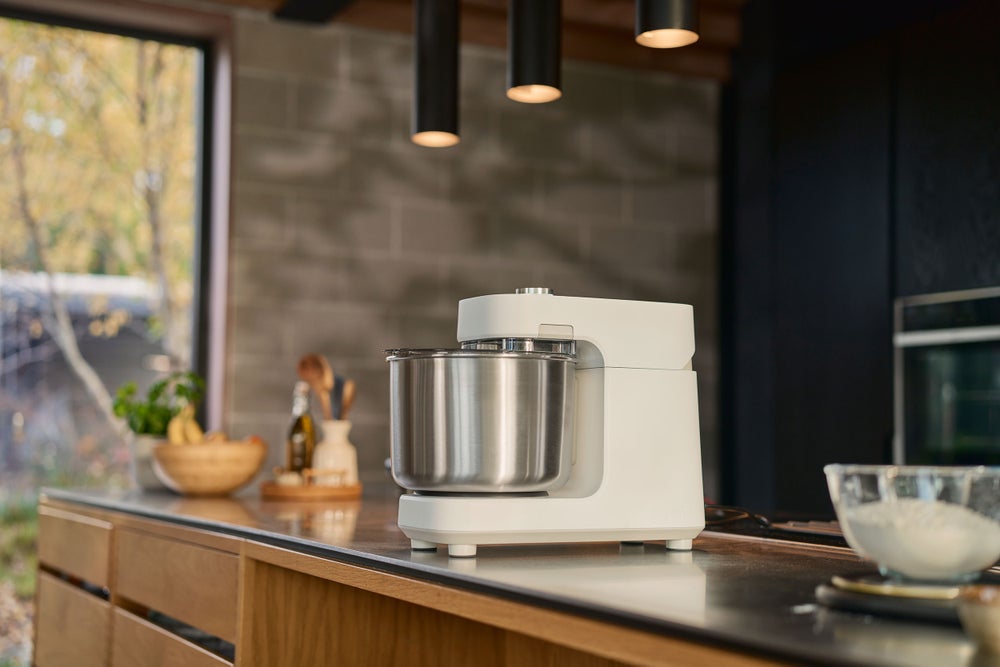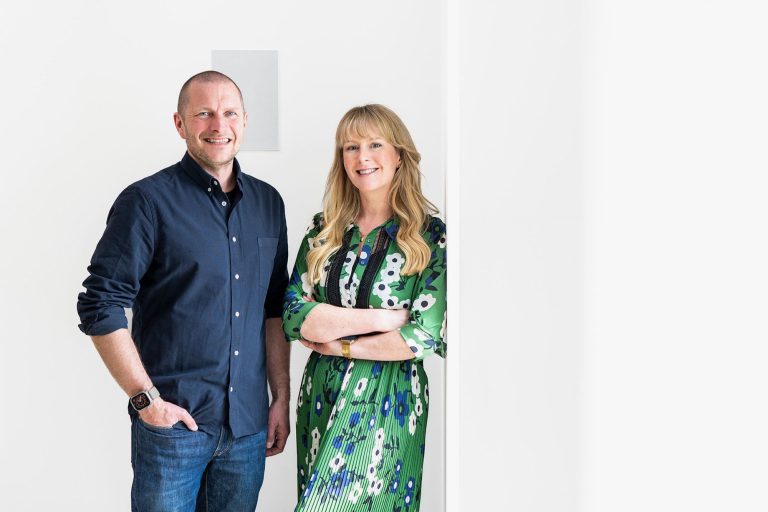Like many successful entrepreneurs, Ooni founder Kristian Tapaninaho’s light bulb moment came when he couldn’t find the product he was looking for on the market. It was around 2010, and Tapaninaho and his wife and co-CEO Darina Garland had recently gotten married and were living in London.
Image credit: Jukka Salminen
Tapaninaho picked up a new hobby — making pizza at home — and ran into a roadblock. He couldn’t recreate the experience of eating at his favorite pizzerias because his at-home oven simply didn’t heat up like traditional pizza ovens.
At that time, if you wanted to recreate the pizzeria experience at home, you had to build a large, expensive outdoor pizza oven that used wood, took a long time to heat up and was not portable.
“I realized that there was an opportunity to build something since no one else was making an affordable and fast pizza oven for home use,” Tapaninaho says. “I thought, Well, let’s see if it’s possible to invent one, and started on that journey of trying to figure out how to make it happen.” He had a strong feeling that if he could figure out a solution, it could make for a promising business.
Related: Plant Lovers Are Making $11,000 a Month On This Fully Remote Side Hustle
Several successful Kickstarter campaigns and more than a decade later, Ooni is the world’s largest at-home pizza oven brand — to the tune of £157 million (roughly $200 million) a year in revenue.
Entrepreneur recently sat down with Tapaninaho and Garland, who are based in Edinburgh, at Ooni’s North American headquarters in Austin, Texas, to discuss how they built their backyard side hustle into a global brand and their best advice for aspiring entrepreneurs.
“Kickstarter wouldn’t allow you to launch the product like that [today].”
After coming up with the initial idea, Tapaninaho and Garland asked their neighbor — a metal welder who usually made gates — to put together a “sketchy” prototype of their pizza oven idea. Then, in November 2012, they launched a Kickstarter to raise funds to bring their product to life.
“Honestly, I get sweaty palms thinking about the level of risk we took on in that campaign,” Tapaninaho says. “Kickstarter wouldn’t allow you to launch the product like that [today].”
Related: These 3 Americans Turned to Side Hustles After Being Laid Off. Now They’re All Making Between $200,000 and $3 Million a Year: ‘Sweet, Sweet Irony.’
The campaign was a success, raising £17,136 from 142 backers (roughly $27,000 at the time), surpassing the initial goal of £7,500. (Of the nearly 10,000 food-related projects that have been successfully funded on Kickstarter, only 25% raise between $20,000 and $99,999.)

Image credit: Ooni
Then, Tapaninaho and Garland had to deliver on their promise. They started searching for a manufacturer, and after striking out in the UK, pivoted to Tapaninaho’s native Finland to produce the first round of ovens.
At the time, Ooni was a side hustle for the couple, who ran an education business that partnered with schools to create curricula around creativity and innovation. “We were very much freelancers going from job to job,” Garland says of their education-related business. “It relied on us delivering, [so] when Ooni came around, I was like, Oh my god, we made money while we slept last night. Like, what have we been doing?“
“It’s our responsibility to make it as big as possible.”
The couple balanced their two businesses — and a newborn — while they started growing Ooni. “We weren’t worried about the downside, I think, because we weren’t in the corporate machine, so we didn’t think we were losing anything by jumping in,” Garland says. “In our education business at the time, we earned around £50,000 a year — not loads, but we were happy, and not having a huge income meant that we were able to take a risk and set up Ooni.”
Ooni started delivering pizza ovens about seven months after the Kickstarter campaign, kicking off years of steady growth and growing pains like finding manufacturers that could keep up with its trajectory and changing the company’s name in 2018 (the original spelling was Uuni). “There was this feeling from the very start that we’re looking at something big here, and it’s our responsibility to make it as big as possible,” Tapaninaho says.
Related: These 3 Side Hustles Make the Most Money While Working Fewer Hours, According to a New Survey
Tapaninaho went full-time with Ooni first, shortly after the first Kickstarter campaign, and Garland was working four days a week on the business within the next few years.
Then, in 2020, when the Covid pandemic hit, panic ensued as Ooni’s retail partners started canceling orders, and the company was sitting on excess inventory. “That turned out to be a blessing in disguise,” Tapaninaho says. “Suddenly, we start seeing our online sales, especially in the UK, followed by the U.S. climbing, climbing, climbing.” It was mid-March 2020, and they managed to have a record-high day of sales in the UK.
That massive growth continued for around 20 months, prompting the company to hire more employees, particularly in the customer service department, while dealing with logistical headaches. Case in point: It had 17 shipping containers with more than 2,000 pizza ovens aboard the Evergreen cargo ship that got stuck in the Suez Canal in 2021.
“We feel incredibly privileged because we were a category that was able to take advantage, and we were also able to pivot quite easily to completely online as a global organization,” Garland says.
Ooni went from £14 million in revenue in 2019 to £157 million a year now, all without taking on private equity funding. The rapid expansion meant the company was more global than ever, so in 2023, Ooni started building executive teams to head up each region, bringing on new hires from major consumer goods brands, including Breville, Dyson and YETI. “You can talk about strategies and tactics, but until you have people with skills, capability and experience delivering it, it doesn’t matter what your strategy is,” Tapaninaho says.
“There are so many ways we can pivot and expand.”
Though Ooni has significantly grown its product line from its original pizza oven, in January, the company announced its first major expansion outside of the category — it’s launching the Ooni Halo Pro Spiral Mixer, which will be available starting April 8. The mixer, which will retail for £699 in the UK and $799 in the U.S., emulates the spiral mixing pattern of professional bakery machines — a technology that’s superior for making pizza dough but hasn’t been widely available to home cooks until now.

Image credit: Ooni
The couple’s philosophy as they expand to other categories is not to make existing products like large traditional pizza ovens or bakery-size spiral mixers obsolete, but rather, to make them accessible to more people. “There are so many ways we can pivot and expand, and we have a lot of ideas, but we need to be making sure we’re adding significant value, and there’s a unique proposition or challenge for our customers,” Garland says.
“We genuinely believe that people are happier when they make pizza with their family at home.”
More than a decade into building Ooni, the couple has valuable advice for people who have an idea for a product but don’t know how to turn it into reality. “Get feedback, but on very specific areas, not necessarily for the whole idea,” Tapaninaho says. “What is it you really need in order to help build it? Are you really sure there’s a customer for it? What is the unique proposition you have in the market?”
And once you’ve determined that, protect your idea at all costs. “Sadly, what you don’t think of much as an entrepreneur at the beginning is IP and protection,” Garland says. “We won quite a lot of awards [in the] early days, and [the prize money] was all spent on IP. Protect what you own.”
And though many successful companies have started because someone simply wanted to be an entrepreneur, it’s a whole lot easier to put in the hours if you’re passionate about the product or service you’re selling.
“We genuinely believe that people are happier when they make pizza with their family at home,” Tapaninaho says. “Our goal is really maintaining that position as number one in the market [and] continuing to push innovation so that in five years, 10 years, 15, 20 years’ time, we continue to define what the market for our category looks like.”
Related: This Couple Wanted to Make an Everyday Household Product ‘Unquestionably Better.’ Now Their Business Sees Over $200 Million Annual Revenue: ‘Obliterated Our Goals.’
Read the full article here








